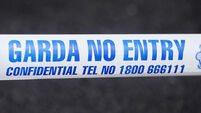Call for action as Battle of Kinsale tourist signs stolen

Members of Kinsale History Society have called on Cork County Council to secure, from theft, the remaining Battle of Kinsale signs.
But they have also called for the remaining signage to be upgraded, for an improved battle display in the town’s museum,and in the long term, for a dedicated Battle of Kinsale centre, given that the town is a gateway to the Wild Atlantic Way tourist route.













